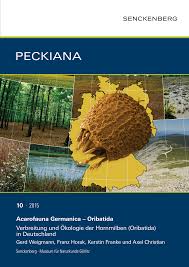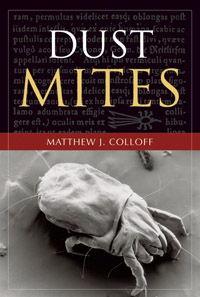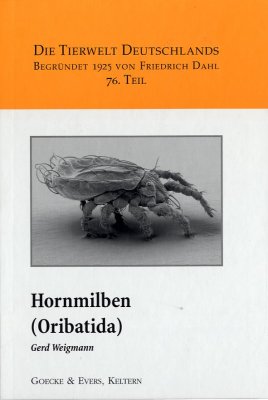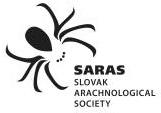 |
|
Gerd Weigmann,
Franz Horak, Kerstin Franke, Axel Christian (2015):
Acarofauna
Germanica – Oribatida.
Verbreitung und Ökologie der Hornmilben (Oribatida) in
Deutschland.
Paperback | September 2015 | ISBN: 9783981524116 |
171 pages | Publisher: Senckenberg Museum für Naturkunde Görlitz
(Peckiana No 10) | b/w maps.
The regional distribution and the ecological preferences in Germany
of 570 species and subspecific taxa of oribatid mites (Acari, Oribatida)
are compiled and presented in raster maps. Main sources of the data sets
are about 120 publications and several unpublished research results in
examination theses, additionally some collections in museums and
universities are regarded. For each species, the basic taxonomical
information is presented, as original description and synomyms used in
German references. The distribution in Germany is pictured in maps with
about 200 raster fields and textually as occurrence in the German
Federal States. The ecological information for each species considers
all findings in different habitat types, preferred habitats are
highlighted. Additionally the preferred substrate type (as soil, tree
bark, water) is marked.
|
 |
|
Matthew J.
Colloff
(2009):
Dust Mites.
Hardcover | June 2009 | ISBN: 978-90-481-2224-0 |
583 pages | 275 x 195 mm | Publisher: Springer & CSIRO for Australia | b/w photos, b/w line drawings.
Conservatively, at least 100 million people are affected by house
dust mite allergy worldwide, manifesting itself as asthma, rhinitis or
atopic dermatitis. Despite the growing recognition of this major public
health problem, and commitment of considerable research resources, there
is still no simple, effective, generally-applicable strategy for dust
mite control. The reasons for this are complex, but a contributing
factor remains some important knowledge gaps and misconceptions
regarding aspects of biology and ecology of dust mites.
The purpose
of this book is to provide a comprehensive reference work for all
readers with an involvement or interest in house dust mite research and
management, incorporating for the first time in a single volume the
topics of systematics and identification, physiology, ecology, allergen
biochemistry and molecular biology, epidemiology, mite control and
allergen avoidance. It is hoped the book will help spread the message
that studies of the biology and ecology of house dust mites should be
regarded within the context of allergic disease rather than as ends in
themselves, and that approaches to mite control in clinical management
are subject to the same series of ecological rules as any other major
problem in pest management.
|
 |
|
Gerd Weigmann
(2006):
Hornmilben (Oribatida). Die Tierwelt Deutschlands.
76. Teil.
Hardback | June 2006 | ISBN: 978-3937783185 | 520 pages | Publisher:
Goecke & Evers | b/w line drawings.
The last complete textbook of oribatid mites from Germany is 75 years old (Willmann 1931).
This contribution deals with the identification of oribatid mites
(Acari: Oribatida) of Germany and the adjacent regions of the
neighbouring countries. The keys comprise 84 families with more than 190
genera. About 520 species from German areas are described for which
chorological and ecological data are given. Altogether about 620 species
are treated including those which have been found up to now in the
adjacent regions, only. The keys are illustrated by 234 tables with
informative line drawings. The appendix presents a family key in
English, additionally. The book is essential for taxonomists and
ecologists dealing with Centraleuropean oribatid mites.
|



 Editors:
Peter Fenďa, Richard Zamec
Editors:
Peter Fenďa, Richard Zamec